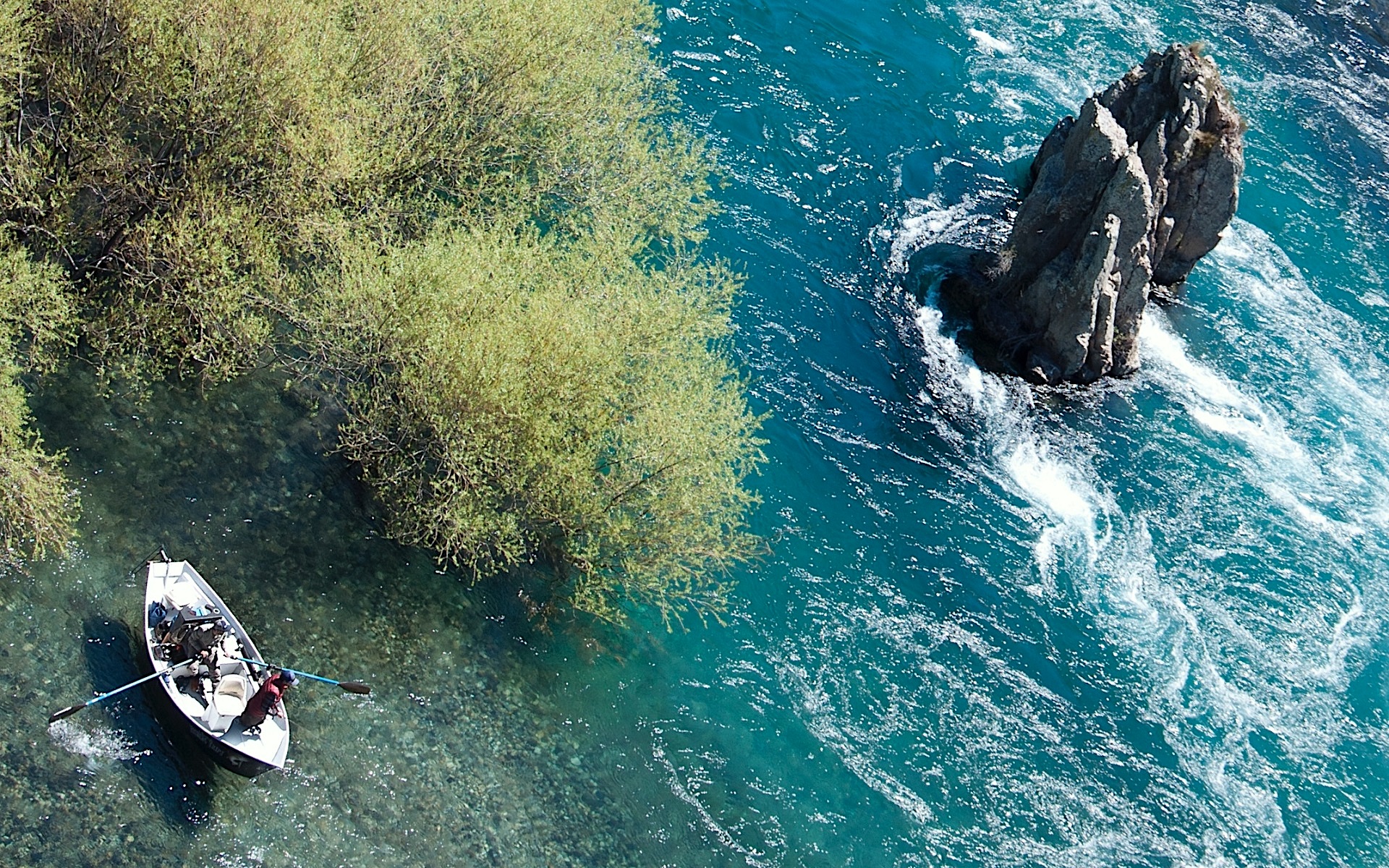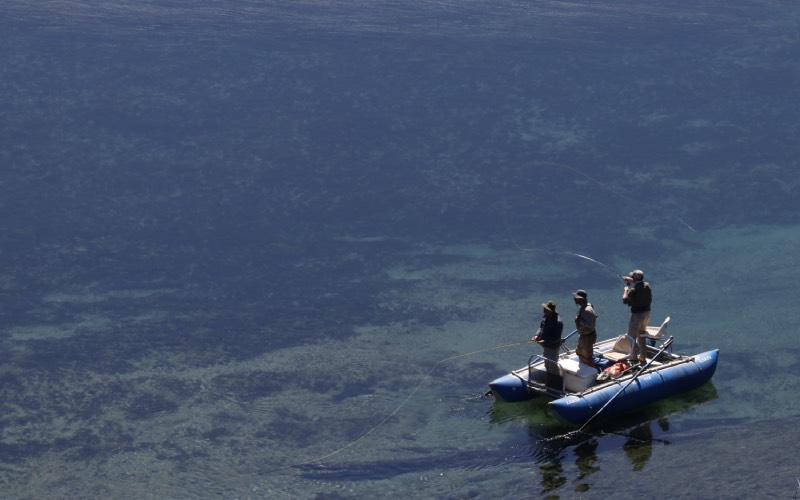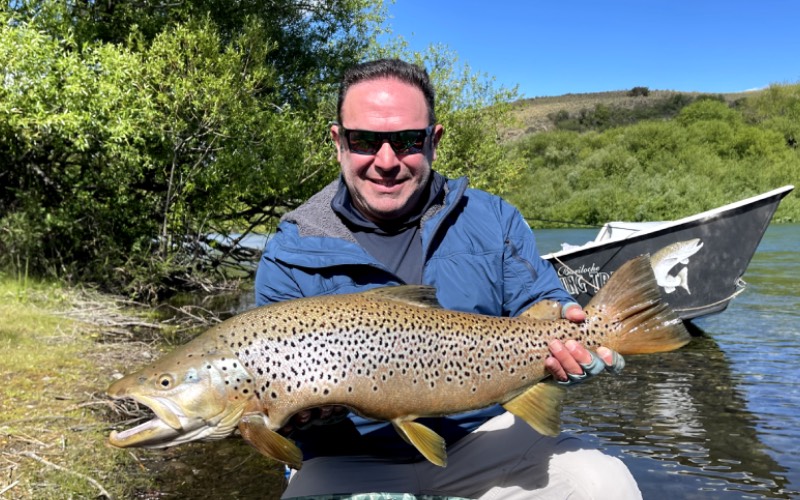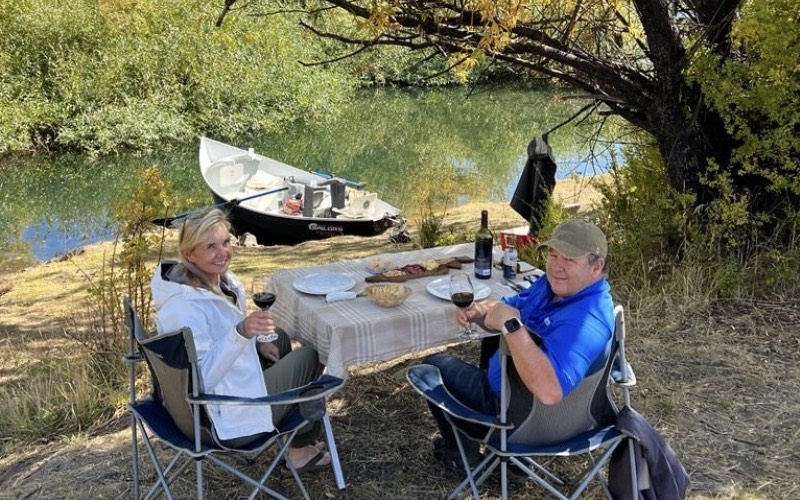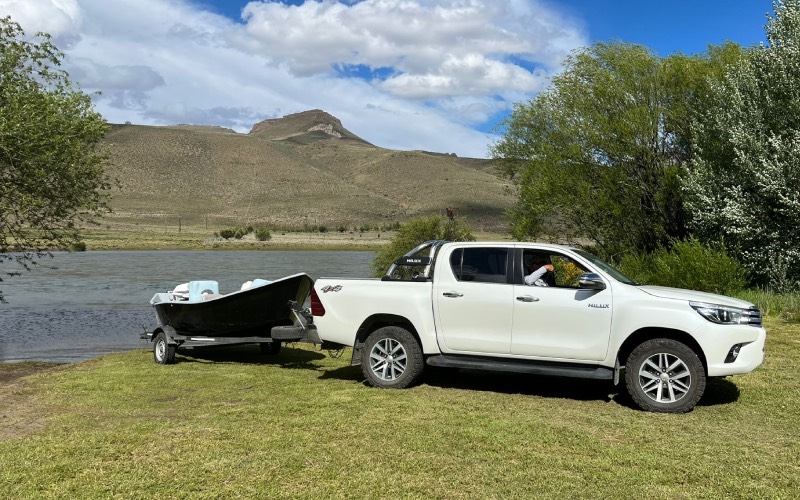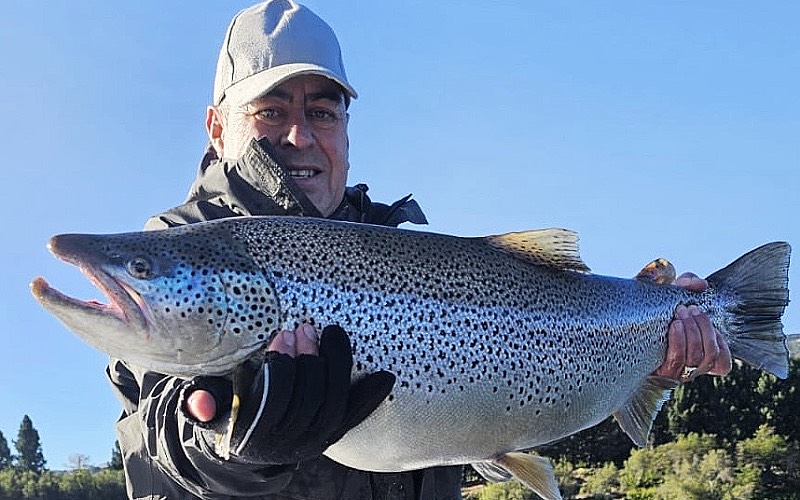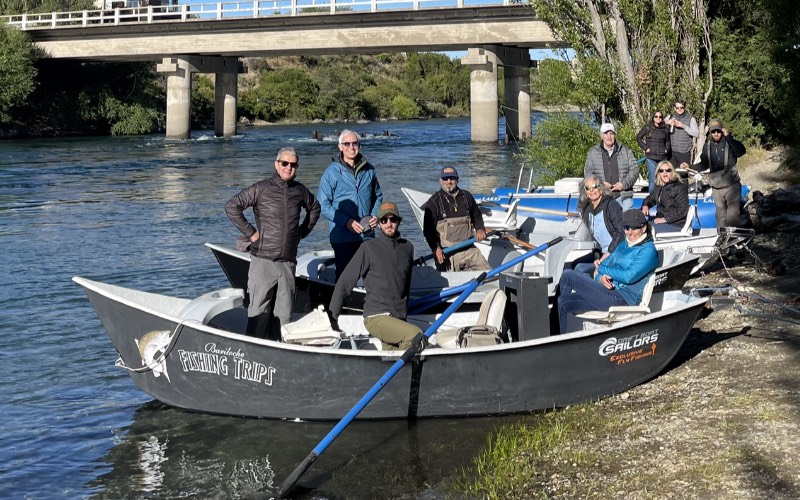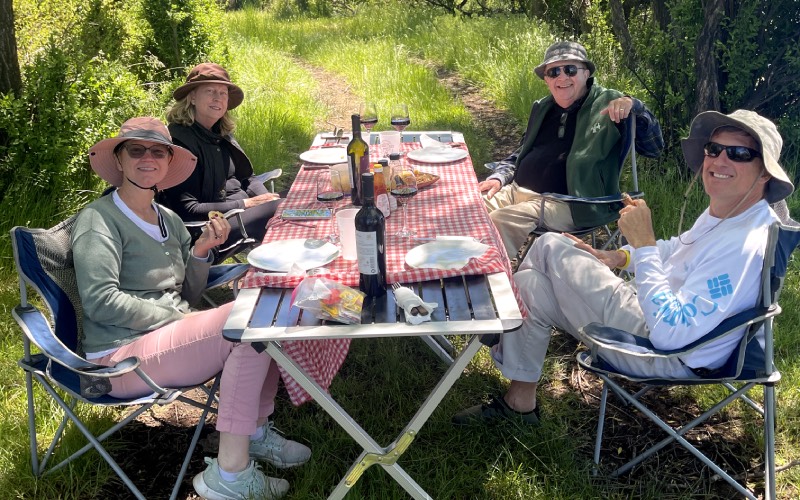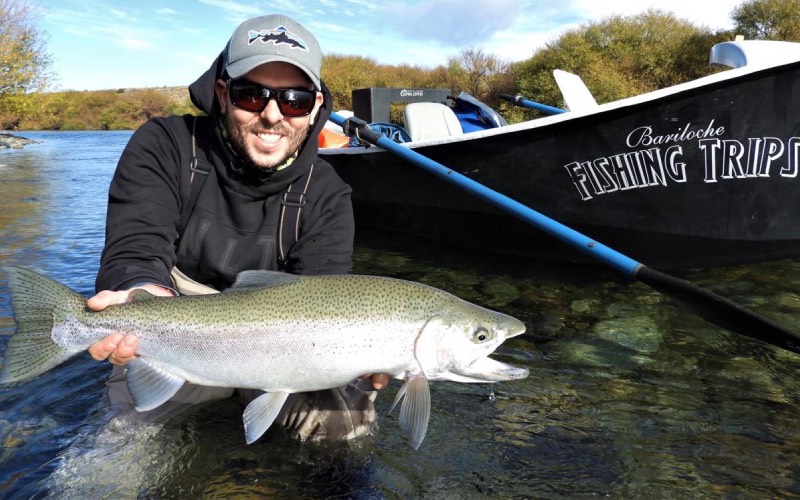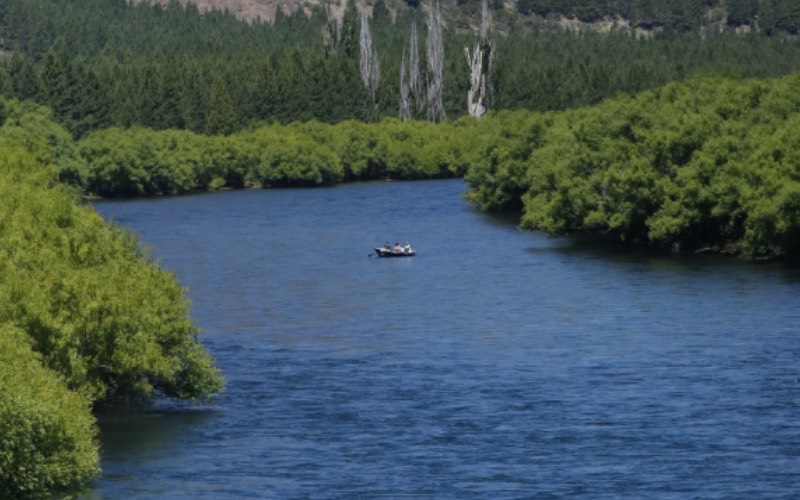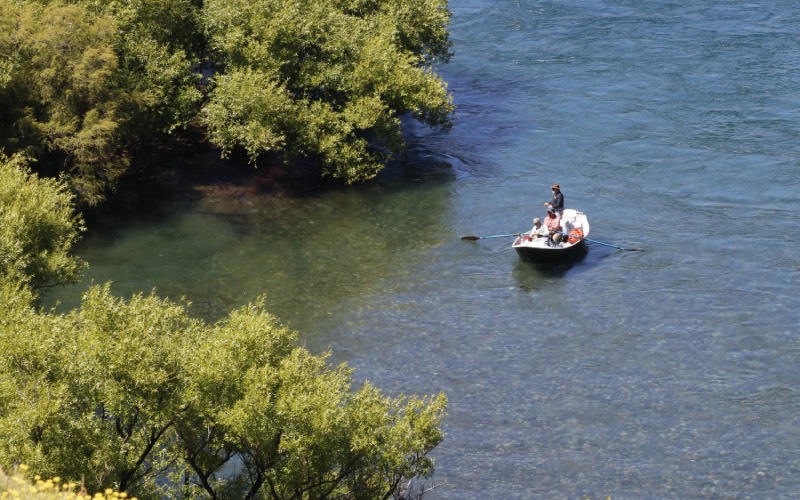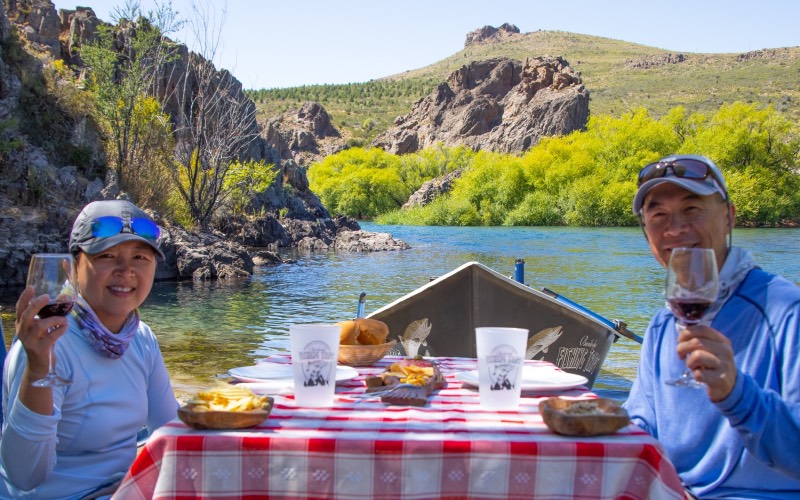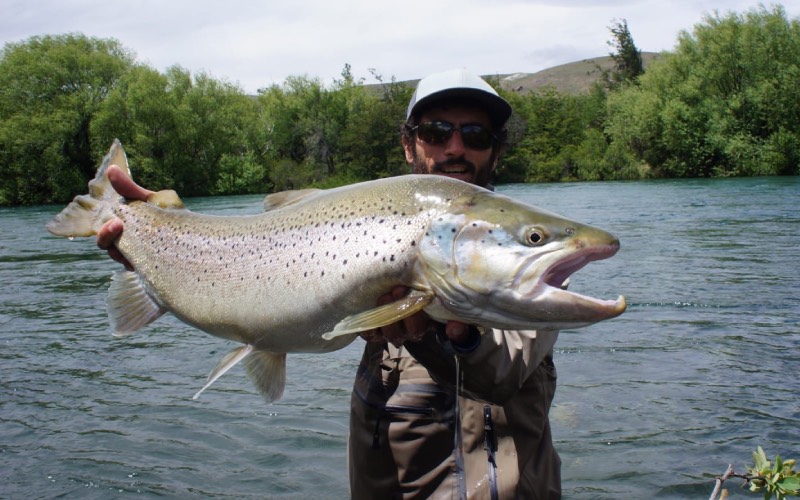-
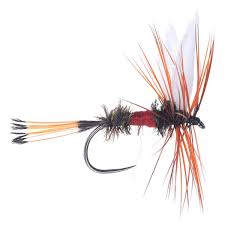
Flies
May Flies 25%: Variants of colors (Gray, light brown, cream, white) and sizes (number 18 25%, 16 30%, 14 25% and 12 20%), There may be variants such as parachute and some rubber legs. May flies are the most common ... REED MORE
-

Rods
December, January and February: For these months you should bring rods for streamers and dry flies. A good combo would be: 1 rod 4 weight and 2 rods 6wht or 1 rod 4wht, one 6wht and one 7 or 8 why per person... REED MORE
-
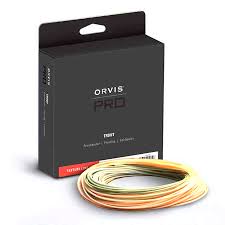
Lines
Sinking lines: There will be 2 designs that we will use, an integrated line type teeny 200 for our 6wht rod and 225/250 for our 7 and 8 wt. And a shooting head of approximately 9 meters tied to an amnesia type nylon ... REED MORE
-
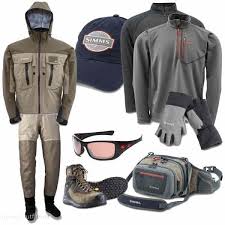
Clothes
Always bearing in mind that Patagonia has a very changeable climate, It's very important for clothing to be worn in a fishing trip. Ideally, dress in multiple layers and depending on the day we will get more or less ... REED MORE
-
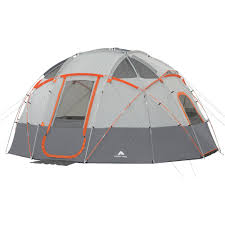
Camps
All the necessary material to camp with the best comforts is supplied by the company. Spacious and warm tent, comfortable and resistant cots, always clean and warm sleeping bags, chairs and tables inside our ... REED MORE
-
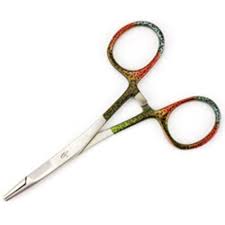
Tools
Clippers, Pliers, Floatant (gel), Split Shots, Striping Fingers, Polarized Glasses, Strike Indicators… REED MORE
Flies
Combo Flies December, January and February
May Flies: Variants of colors (Gray, light brown, cream, white) and sizes (number 18 25%, 16 30%, 14 25% and 12 20%), There may be variants such as parachute and some rubber legs. May flies are the most common
Spinners: they will be very effective in the same sizes and color range as the May Flies.
Caddis: Variants of colors (Gray, cream, white) and sizes (number 18 30%, 16 50% and 14 20%)
Dragon Flies: Although it is a difficult fly to imitate, we recommend tying it with an extended body, of deer hair, in olive green combined with light brown. Its wings with little material so that our leader or tippet does not turn.
Terrestrials: This genus of flies will probably be the most used when floating rivers. We will call terrestrials large dry flies that can mimic insects such as beetles, grasshoppers, butterflies etc. In 1st place we will put Fat Albert in black with a red strike indicator, without a doubt this fly is the most effective in our waters and we recommend having it in size 10, 8, 6. Flies similar to this will always be effective, in those colors or in colors from the range of brown and yellow and the peacock will always be very effective as a body! Other used are Chernobyl Ant, PMX, Stimulator all in the same color and size ranges.
Wolly Buggers: They must be large for the Limay river (number 4 40% and 2 60%), from 8 to 12 cm, the most used colors are olive green and black, then orange and brown. And number 6 for the rest of the rivers, We recommend experimenting with variations such as the inclusion of rubber legs in white, orange and red colors. Some with flattened muddler heads that generate enough volume. Articulated or trailer hooks will be also really good!
Minows: We recommend large sizes again for the Limay river, one of the most famous is called (Little Pelen) which is tied on a hook number 2 and has a length of 12 to 14 cm. In these cases we recommend them long and with the least possible weight to facilitate the casting. The most used colors are: (White combined with olive, brown and gray), (Black combined with red, yellow or chartreuse) and (Orange combined with olive or white). Any variety of minows will be effective as long as its size is indicated and its hook is for trout, we clarify this detail since many of these flies are tied for salt water or fish with large dentures and the wire is usually very thick to catch trout.
Rabbits: Again the size of our rabbits should be 8 to 14 cm in hooks number 2 or articulated for the Limay river and smaller size 6 for the rest of the river. (Olive green combined with orange, brown and gray ), (Black combined with red and yellow) (Brown combined with gray, white and pastel). We can tie them with lead eyes to sink or with Zoo Kougar or Natcracker type muddler heads. Again we will consider that the hooks are for trout with a fine, resistant wire and good edge.
Nymphs: In occasions we can identify trout and in this way try to reach the bottom with a nymph, floating lines and long leaders, for this we can use imitations of stoneflies or dragonflies and their variations, always with ballast , either lead inside or beedheads, the sizes we recommend are hooks 8, 6 and up to 4, with rubber legs and dark colors such as black and olive.
Small Nymphs: The most used will be the Prince, Pheasant tail, Copper John, Hare's (sizes 12 25%, 14 45% to 18 30%). All of them must have good weight, they can be weighted with lead and / or beadhead. Some may have combinations with rubber feet of different colors. We also recommend bringing split shots to work the different depths.
Combo Flies Novemver, April and May:
In these months we will fish only streamers with sinking lines and the flies that we recommend you to bring have to be big and heavy, to find the big browns and rainbows that usually will bite a big fly! we won't use to many 6 hooks at this times.
Rods
November, April and May: We will use 7 or 8 weight rods to cast 200 sinking lines and streamers, we recommend bringing a minimum of 2 per person.
December, January and February: For these months you should bring rods to cast streamers and dry flies, a good combo would be: 1 rod 5 weight, one six and if you like to cast something heavy a 7 or 8 will help in the wind, with this combination we make sure we can do each different type of fishing that comes our way. 2-hand rods: We use 2-hand rods, we recommend lines 8 from 13 to 14 feet and fast action.
Lines
Floating Lines: We recommend a nice WF easy to cast long distances, not very bright colors, we will only use float lines on our rods 5 & 6.
Sinking Lines: There will be 2 designs that we will use, an integrated line type teeny 200 for our rods 6 and 225/250 for our 7 and 8.
Spey Rods: A Fast Sinking Shooting Head with a fine running in the back. We don't use floating lines in our spey rods.
Clothes
Patagonia: Has a very changeable climate, It's very important for clothing to be worn in a fishing trip. Ideally, dress in multiple layers and depending on the day we will get more or less. During the summer days, you can fish with lightweight shorts and T-shirts.
Always have on hand: Waterproof jacket, sunglasses, sun hat, wind breaker, rain gear, sandals & hiking shoes, strong sunscreen, lip balm, buff and stripping fingers.
Waders and boots: We will use them mostly in November, April and May, but some days they can be necessary in the summer as well. If you are coming for several fishing days we recommend you to take them, in case that you are thinking to do just a few fishing days, we recommend you to use the company gear.
Camps
All the necessary material to camp with the best comforts is supplied by the company. Spacious and warm tent, comfortable and resistant cots, always clean and warm sleeping bags, chairs and tables inside our dining tent where we can share great moments, etc.
We always worry about having the best equipment and in perfect conditions to provide a service according to the highest expectations of our customers.
Tools
Fishing Tools. Clippers, Pliers, Floatant (gel), Split Shots, Striping Fingers, Polarized Glasses, Strike Indicators…
